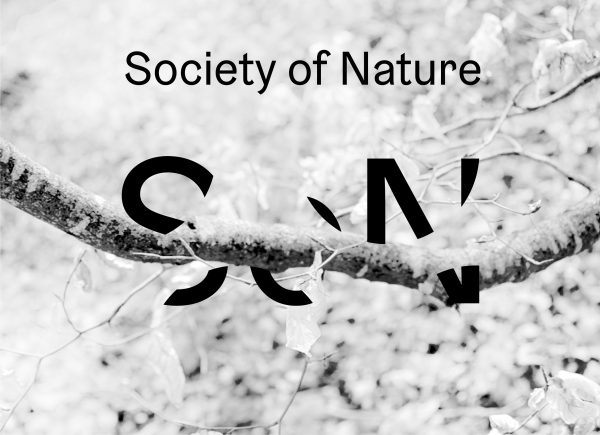Master Project
Arianna Guidi
Society of Nature

oncurating-space.org/society-of-nature
“My eyes follow the shape of the trees through a horizontal line, parallel to the ground, from right to left. The feet follow my eyes, the body follows my feet. What lies in front of me is an encounter with dialogue. Constructing image by image, giving shape to it. What do I see? What do I hear?”
In February 2020, right at the pandemic outbreak in Europe. I began my daily walks up to Gempen. The simple act of walking and listening reawakened and deepened my perception of that place, time, distance. Up on the hill, the northern tip of Canton of Solothurn, birds play, colours sing, the moss permeates the air. Seeing and hearing day by day, made me encounter and dialogue with my sleepy self, and question my perception of what hides in front of my eyes and what whispers in my ears. It’s from this moment of awakening and becoming more aware of the sensory, the body, that the project Society of Nature (SoN) arises.
How do we perceive what surrounds us? How do we actively engage with it? Our perception of the world is distorted by the production and accumulation of images which become a model to follow and to produce knowledge. We construct our world around those appearances that feed our imagination and form the reality of our modern society, rather than actively and collectively engage with our life.
Society of Nature is a curatorial platform that assembles multiple perspectives through art and design agencies. It aims to create awareness of diverse human and non-human knowledge, interrogating forms of representation both in a digital and in a physical space. It’s conceived as experimental fieldwork, a space to coexist, cooperate and exchange ideas by turning our gaze towards the terrestrial: the view from our body.
Society of Nature’s platform consists of two main phases: a digital fieldwork and a physical fieldwork, developing in parallel to each other and feeding into one another during the months of May and June 2021. The first phase, the online Symposium Where is Nature?, also intended as a pre-production phase and active dialogue between the artists, the curator and the audience, is perceived as a space to investigate image representation, human and non-human perception through the five senses. The second phase SoN Exhibition wants to create an immersive experience of diverse knowledge production. The seven artists and designers selected for the exhibition share a dynamic and ecological worldview.
From learning to dream with indigenous midwives in Mexico, with the 3d plant video work by the artist Daniel Godínez Nivón, to experiencing the vibrant ecosystem in ‘Tierra del Fuego’ in Patagonia, with Valentina Pini’s video, or contemplate the crystallisation processes and formations through the visual installation by Michelle-Marie Letelier. The Irish artist Laura Ní Fhlaibhín reflects upon the rich and lively Irish folklore and literary traditions with a large-scale painting, Alaa Abu Asad explores the concept of flora invasion with his Japanese knotweed’s audio-visual installation; Sadra Wejdani visualises his research on asphalt and microorganisms, and Martina Taranto will intersect natural, historical, folkloristic and mystical elements into practical and meditative exercises for visitors of the exhibition.
Can we become Society of Nature by unveiling what already exists, rethink image production through the testimony of nature, forms of art and design, and thus, becoming collective producers of our life?
Arianna Guidi is a curator and designer from Rome. She lives in Basel and works between London and Zurich. She holds a master in Contemporary Typographic Media from the London College of Communication and a BA in Design from the ArtEZ University of the Arts in the Netherlands. She works as a freelance designer for various studios and agencies in London, she is Associate Curator at ‘Looking Forward’ and co-founder of the curatorial platform ‘Nomadic Shapes’ together with Myriam Boutry, which focuses on researching diverse curatorial methodologies, experimenting with the exhibition space, by questioning the possibilities of physical and digital forms.
